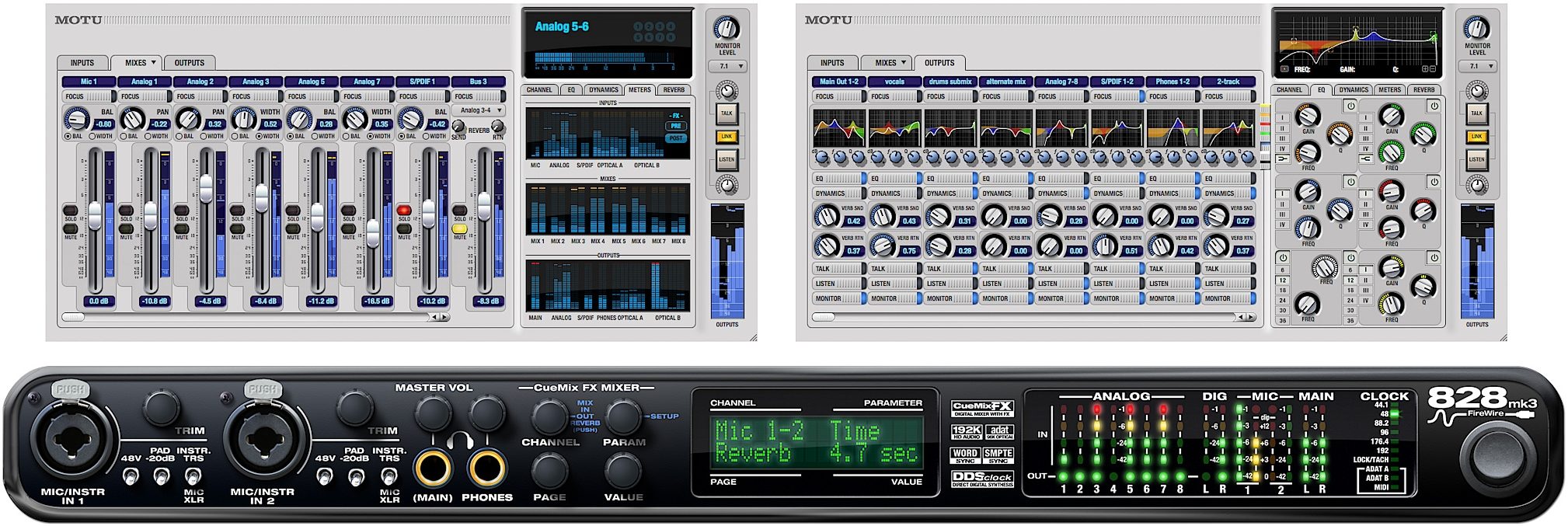
For me, the Arturia out-performed a number of USB devices laying around my studio.

Remember that with latency the point isn’t just paper specs or whether the audio interface can run with a small buffer size it’s whether you consistently remain without pops at that small buffer size. You mileage may vary, but I got extremely reliable results with a 64 sample buffer size, which means well under 10 ms latency, on Mac, Windows, and Linux with a variety of tools. Meanwhile, the AudioFuse remembers all of its settings after you disconnect from the control panel.
#MOTU 828 MK1 SPECS SOFTWARE#
And there’s enough onboard control that I didn’t feel stranded without the software control panel, even though it’s useful in some situations.
#MOTU 828 MK1 SPECS PC#
But I’ve happily dual-booted to Linux on my PC and gotten great results from the box. You will need Mac or Windows to run the AudioFuse Control Center for additional configuration options. But unofficially, that means Linux, Raspberry Pi, iOS, and Android, too. Officially, that means Mac and Windows support that’s plug-and-play. With this amount of I/O, USB 2.0 makes this box far more flexible and compatible.
#MOTU 828 MK1 SPECS DRIVER#
What the AudioFuse manages to pull off, and this isn’t easy, is maximizing flexibility in a variety of situations while still fitting into an enclosure small enough that you may always keep it in your backpack.įirst, one feature that makes the AudioFuse essential to keep around is, it’s USB 2.0 class-compliant, driver free. And I can share what I’ve been sharing with friends about it – this is easily on my short list of easy-to-recommend audio interfaces. I’ve had my hands on the AudioFuse for some time now, long enough to torture test it with both my Mac and PC in a variety of live and studio conditions. What’s impressive about Arturia’s AudioFuse is that they seem to have taken to heart a lot of the wishes of the mobile musician – and actually delivered. Music – it’s kind of important to human civilization. (Computer and OS makers, I’m looking at you. Some of this is in the hands of manufacturers some is decidedly not. And computer operating systems remain an obstacle – especially once you’re beyond what theoretically should work, and into the realm of now something is popping and I better turn up the buffer size. The interface either never has every single port you want, or … it does, but it’s big. Look, when it comes to audio interfaces, compromise is the name of the game. But Arturia stands out by cramming an unusual amount of connectivity in an ultra-mobile package.

There are some exceptional audio interfaces out there.


 0 kommentar(er)
0 kommentar(er)
